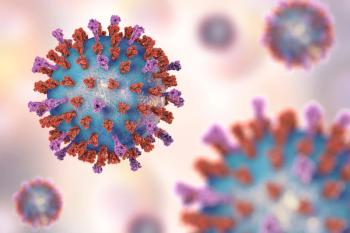During the 2024 Alzheimer Association International Conference (AAIC), Pharmacy Times interviewed Joshua Hare, MD, FACC, FAHA, co-founder, chief science officer, and chairman at Longeveron, on the phase 2a CLEARMIND (NCT05233774) clinical trial results. In this interview, Hare discusses details of the trial, the results, as well as provides commentary on valuable information to come from the trial. He also describes the next steps in the clinical development of Lomecel-B in those with mild Alzheimer disease (AD).
Key Takeaways
- Safety and Efficacy of Lomecel-B: The phase 2a CLEARMIND (NCT05233774) clinical trial demonstrated that Lomecel-B, a cell-based therapy, is safe for patients with mild Alzheimer disease (AD), showing no significant increase in treatment-emergent serious adverse events across dosing groups. Additionally, the trial indicated potential efficacy, with 1 dosing group showing significant improvement in cognitive measures compared with placebo.
- Targeting Neuroinflammation: Lomecel-B's mechanism of action targets neuroinflammation, a key factor in the progression of AD. The trial utilized diffusion tensor imaging MRI to measure neuroinflammation and observed a reduction in neuroinflammatory markers in patients receiving Lomecel-B, supporting the hypothesis that neuroinflammation plays a critical role in AD pathology.
- Encouraging Results and Future Development: The trial exceeded expectations by showing consistent signals of efficacy across multiple domains, including cognitive function and brain atrophy. These promising results have led to a "go" decision for further development, and Longeveron has received the regenerative medicine advanced therapy designation from the FDA, expediating future clinical trials and potential approval of Lomecel-B for clinical use in mild AD.
Pharmacy Times: Can you provide an overview of the phase 2a CLEARMIND clinical trial?
Joshua Hare: The study (NCT05233774) addressed a patient population with mild Alzheimer disease (AD), the therapeutic agent is a cell-based therapy called Lomecel-B (Longeveron). The objectives of the study were as follows: [First,] we had previously shown in a phase 1 [trial] the safety of single dosing, and objective 1 of this study was to explore the safety profile of multiple dosing regimens; [second was that] we wanted to advance findings of target engagement. The target engagement hypothesized for this agent is neuroinflammation; and [third,] we wanted to explore findings of efficacy.
So, the study was successfully conducted and enrolled 49 patients, it was a placebo-controlled, double-blind study. The primary safety end point was met, there was no increment of adverse events (AEs) in either the single or multiple dosing regimen, so we were satisfied with an acceptable safety profile and feel that there's a favorable risk-benefit ratio. In terms of targeted engagement, we used diffusion tensor imaging (DTI) MRI to look at [and] use it as an index of neuroinflammation. And it was exciting and exceeded our expectations to see a very good effect on reduction of neuroinflammation in both white and gray matter areas.
Now, when we come to the efficacy measurements, an efficacy composite—or a CADS score—was our prespecified secondary end point, it was a composite of the Sum of Boxes score (CDR-SOB), the ADAS-cog, the hippocampal volume and the ADL score—an activity or daily living score. And that did meet a prespecified p value of less than .01 (p < .01). So, in at least 1 of the groups, there was a significant P value less than .01 (p < .01) in 1 of the dosing groups relative to the placebo group. The placebo group did show evidence of deterioration of that score over time, suggesting that it was a well-chosen group, and I should also mention that the treatment groups were well-balanced.
Pharmacy Times: What is Lomecel-B’s mechanism of actions in treating mild AD, and what may have motivated the investigation of this therapy as a treatment for mild AD?
Hare: So one of the key hypotheses of AD is that neuroinflammation plays a pathophysiologic role both in the genesis and advancement of the disease. Current therapies don't address neuroinflammation at all, and so, our agent is a living human cell—it's a mesenchymal stem cells stem cell—it can be used as an allograft, so as an off-the-shelf product, and it is well-known and well-established to modulate the immune system in favorable ways [and in] ways that are safe. So, we got very interested in the neuroinflammation hypothesis of AD about 5 or 6 years ago—maybe even a little bit longer—and conducted our phase 1 study, primarily motivated by the neuroinflammation hypothesis, with the expectation that our cell-based drug could modulate that.
In this phase 2, we developed data that are consistent with that hypothesis by using DTI, as I previously mentioned, which is useful as a potential index of neuroinflammation. We did see increasing DTI signals in the placebo group, and the increase in those DTI signals were aborted and attenuated in all of the treatment groups of patients receiving Lomecel-B.
Pharmacy Times: What were the primary and secondary end points of this trial, and what was used to assess them?
Hare: So the primary end point was safety and we chose as the key primary end point the occurrence of treatment-emergent serious adverse events (TESAEs) within 30 days, and then all SAEs over the treatment period which was 9 months. There was no increase in TESAEs in the treatment groups, and there was only 1 SAE over the 9 months in each of the dosing groups, but none of them were attributed to the drugs—so they were not drug-attributable SAEs—and also, the patients recovered from them. There were no deaths on study, so we feel that the side effect profile is very acceptable in this population.
The secondary end point—as I previously mentioned—was a CADS score, and the CADS score did show statistical significance at the p value less than 0.1 (p < .1), which it was the prespecified p value, we used .01 rather than .005, simply because we're at a proof of concept stage and it's a small trial. We did see that p less than .01 (p < .01) in one of the dosing groups relative to placebo. Also, in the pooled data—of all of the treatment groups—there was also less than .01 (P < .01). So, there were numerical trends in all of the treatment groups, 1 was statistically significant. And we felt that those findings on the secondary end point were consistent with the therapeutic effect.
We did delve deeper on secondary and tertiary end points to look at specific metrics of cognitive function and quality of life, and we saw a nice and consistent signal across 2 measures of cognitive function, the Mini Mental [State Examination] score (MMSE) and the [Montreal Cognitive Assessment] score (MoCA). The MoCA score actually revealed statistical significance, as did a metric of quality of life and an ADL score, so we were pleased about the consistency of findings.
There was a third domain in which we looked at efficacy end points, and this was using sequential volumetric MRI to look at brain atrophy. We saw progressive atrophy in the placebo group and all regions of the brain. And in many of the regions of the brain, we saw that the active treatment groups reduced the progression of brain atrophy in many regions of the brain, including the hippocampus. And finally, a finding we're very excited about—again, it's a provisional post hoc analysis—is we correlated hippocampus size with change in MMSE score and MoCA score and [we] found a statistically significant linear relationship, indicating a suggestion that is finding that's consistent with the change in hippocampal volume being predictive of decline in cognitive function. And that's a finding we will certainly explore in future trials.
Pharmacy Times: Was there anything that was observed in the phase 2a trial that was particularly surprising or interesting?
Hare: Well, I have to say the the totality of evidence exceeded our expectations. This was a relatively small trial—it's certainly small by AD space standards—it was [a] 2a [clinical trial,] and it was primarily designed to look at the safety profile, that was the primary end point. So, we really exceeded our expectations that we saw signals of efficacy across multiple domains and in such a consistent way. So, again, the fact that the hippocampal volume is correlating with the change in cognitive outcome scores, it really is very exciting. So, I think that we would say the trial exceeded our expectations and motivates us to continue development of this drug in this area.
In that regard, I want to mention that we recently received the [regenerative medicine advanced therapy] (RMAT) designation from the FDA—which is a very valuable designation for people working in the regenerative medicine space—and we will be through the rubric of the RMAT designation, we will be having a Type B meeting with the FDA, which will enable us to get a consensus with the agency as to what the end points of the next trial should be. So, we will be proceeding to a next phase trial.
Pharmacy Times: What are the next steps for this clinical trial and in the clinical development of Lomecel-B?
Hare: So, we feel that in terms of getting a "go no-go" decision, we have a "go" decision based on this trial, and that's exciting for us. In addition, we an RMAT designation from the FDA. We're a small biotech company, and so issues of cost do play a role in just how ambitious the next trial will be. But Longeveron is committed to developing this drug in this area, and we will be pursuing grant funding partnerships in any manner to be able to do the next trial. The goal of the next trial is very much to move this therapy towards approval and towards clinical use.





